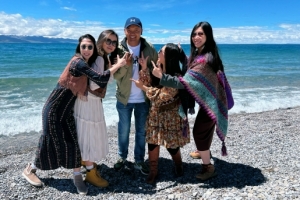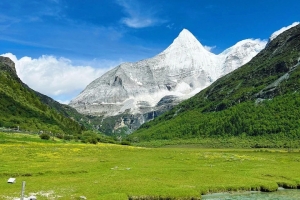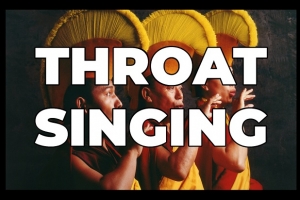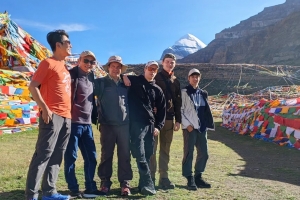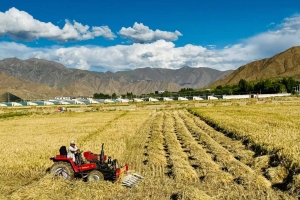When you arrive in Tibet, whether by train along the breathtaking Qinghai-Tibet Railway or by air into Lhasa, you may be greeted not only by snow-capped peaks and crisp mountain air but also by a mysterious sound unlike anything you have heard before. A low, vibrating hum reverberates through the monasteries and streets—deep, resonant, and almost otherworldly. This is Tibetan throat singing, a practice that blends culture, spirituality, and music into one of the most unique sonic experiences on Earth.
The Origins Of Throat Singing In Tibet
Throat singing, also known as overtone singing, has existed for centuries on the Tibetan Plateau. Its earliest practitioners are believed to have been nomadic herders and shamans who used sound to communicate with nature and the unseen world. The harmonics produced through throat singing often mimic natural elements—wind sweeping across the mountains, rivers rushing through valleys, or the echoes bouncing off cliffs—connecting singers with the land they inhabit.
Integration With Buddhism
In the 7th century, as Buddhism spread across Tibet, throat singing became intertwined with spiritual practices. Tibetan monks adopted and refined the technique, using it as a form of sound meditation during rituals, mantras, and ceremonies. The low, resonant tones were believed to calm the mind, invite divine energy, and assist practitioners in entering higher states of consciousness.
A Cultural Bridge Between Nature And Spirit
Unlike many musical traditions that remain purely artistic, Tibetan throat singing is both an art form and a spiritual practice. It reflects the unity of human life, nature, and religion—an embodiment of Tibet’s cultural identity that still resonates in monasteries and villages today.

Understanding The Art Of Tibetan Throat Singing
Unlike traditional singing, which produces one pitch at a time, throat singing allows performers to produce two or more notes simultaneously. This is achieved by amplifying the natural overtones of the voice, resulting in a sound that feels both grounding and ethereal. Listeners often describe the experience as if multiple singers were chanting from one body.
To master throat singing, practitioners must control their breath, vocal cords, and the resonant cavities of the chest, throat, and mouth. By adjusting the shape of the oral cavity and controlling airflow, singers selectively amplify certain overtones while maintaining a steady fundamental pitch. This requires years of training, focus, and physical endurance, turning the act of singing into a meditative discipline.
Styles And Variations Of Tibetan Throat Singing
While throat singing exists across Central Asia, Tibet has developed its own distinctive styles:
- Khoomei – A soft, humming style with higher overtones floating above a deep drone.
- Sygyt – Produces clear, whistle-like harmonics that soar above the fundamental pitch.
- Kargyraa – A powerful, growling style that uses the vocal fry register to create an earth-shaking resonance.
Regional Variations Across Tibet
In nomadic regions such as Amdo, throat singing often imitates the sounds of daily life—windstorms, animal calls, or rivers—serving as a form of oral tradition. In contrast, monasteries emphasize throat singing as a ritualistic practice, where groups of monks chant in unison, creating a wall of sound that envelops the listener in spiritual intensity.
Throat Singing In Tibetan Culture And Spirituality
Role In Rituals And Ceremonies
In Tibetan Buddhism, sound is considered sacred. Throat singing is central to many rituals:
- Monastic Ceremonies – Monks chant mantras in deep unison, invoking blessings and purifying the surrounding space.
- Festivals And Celebrations – During Tibetan New Year (Losar) and other festivals, communities gather to chant, dance, and sing in harmony.
- Life Events – Weddings, funerals, and community gatherings often feature throat singing to mark transitions and seek divine protection.
A Tool For Meditation And Healing
The harmonic overtones of throat singing are believed to have healing qualities, resonating with the body’s energy centers. For practitioners, the discipline is both vocal yoga and spiritual exercise, aligning body, mind, and soul. For listeners, the vibrations induce calmness, clarity, and a sense of unity with the universe.
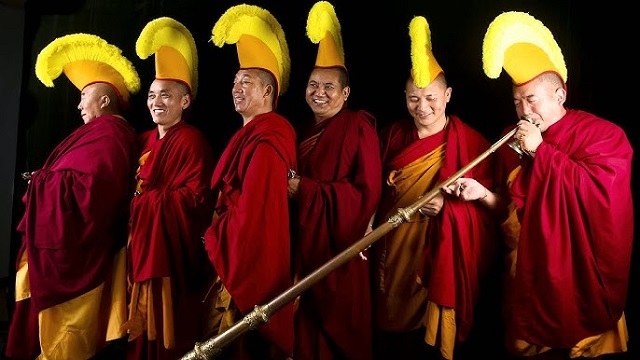
Where To Experience Throat Singing In Tibet
In Monasteries
Travelers visiting Lhasa’s great monasteries—such as Drepung, Sera, or Ganden—may hear monks chanting in unison during daily rituals. The deep resonance fills entire assembly halls, leaving visitors spellbound.
During Festivals
Plan your trip around Losar (Tibetan New Year) or the Shoton Festival, and you will likely encounter public ceremonies filled with chanting, dance, and song. These are excellent opportunities to witness throat singing as part of Tibet’s living traditions.
On The Streets Of Lhasa
Sometimes, the most magical encounters happen unexpectedly. As you stroll through Barkhor Street near Jokhang Temple, you may hear groups of monks or locals chanting in harmony – a reminder that spirituality in Tibet is woven seamlessly into daily life.
Why Throat Singing Fascinates International Travelers
A Unique Cultural Experience
For many visitors, Tibetan throat singing is unlike any other musical encounter. It is not just a performance but an immersive cultural experience, allowing travelers to feel the heartbeat of Tibetan spirituality.
A Window Into Tibetan Identity
The art form reflects Tibet’s deep respect for nature, community, and faith, giving travelers insights into values that continue to shape daily life on the plateau.
A Soundtrack To Your Journey
Whether you are trekking near Mount Kailash, exploring Yamdrok Lake, or visiting Lhasa’s sacred temples, throat singing becomes the soundtrack of Tibet—one that lingers in memory long after you have left.
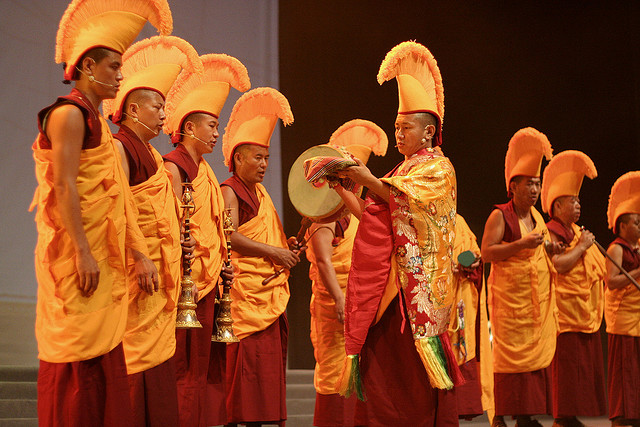
Journey2tibet: Your Gateway To Cultural Immersion
If throat singing has sparked your curiosity, why not experience it firsthand? Journey2tibet, a trusted Tibet travel agency, specializes in creating immersive journeys that go beyond sightseeing. From monastery visits where you can witness throat chanting rituals, to festival tours that bring you close to local traditions, we ensure that your journey is not just about landscapes but also about cultural discovery.
Embark on a Tibet adventure with Journey2tibet, and let the ancient voices of the plateau guide your path.

